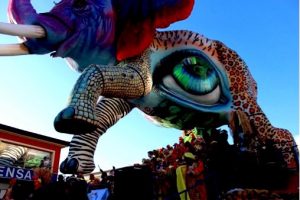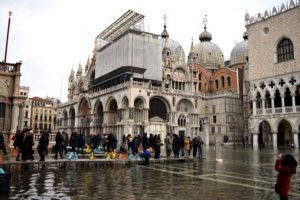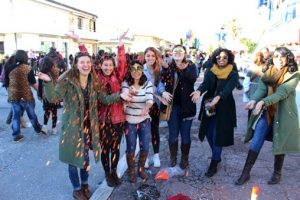During the month of February cities throughout Italy are covered in confetti from the celebration of carnivals. This past weekend we got to experience the “Carnevale di Viareggio” (organized by ISI Student Services) and the “Carnevale di Venezia”.
We arrived in Viareggio to children and families walking down the street dressed in various costumes; it looked like Halloween in the US. As we got closer to the scene of the “carnevale”, we heard music playing loudly, saw huge mechanical floats being set up and confetti being thrown everywhere. There were people swarming everywhere with food from different vendors and children spraying silly string at passing carnival goers. The costumes ranged from superheroes to Disney characters and many wore crazy colored wigs and decorative masks. It was nothing like we had expected, but it was an event everyone that comes to Florence should experience.
Venice was just as beautiful and unique as I had always imagined it would be, and despite the cold by the end of the weekend the entire island was buzzing with activity due to the start of “Carnevale”. This iconic event is celebrated for about two weeks in early February, and it has a particularly intriguing history in this city of canals and gondolas. By all counts the revival of carnival has been a huge success. Over three million tourists now attend it every year in Venice, and the city is once again known for this lavish festival and its iconic masks. Shops with every kind of mask imaginable and every type of glass shape (from the island of Murano) conceivable crowded St. Mark’s square and much of the city. Each forno (bakery) had piles of galani, fried pastries only available during the carnival season. Even on Sunday, when previous days of rain swelled the canals so that St. Mark’s was flooded up to mid-calf height, visitors from around the globe were undeterred in their determination to explore and experience the vibrant season of “Carnevale”.
Written by (in alphabetical order): Melissa Barosy (Quinnipiac University), Margaret Haberlein (UConn), Morgan Moschetta (Quinnipiac University), and Kelci Straka (UVA).



